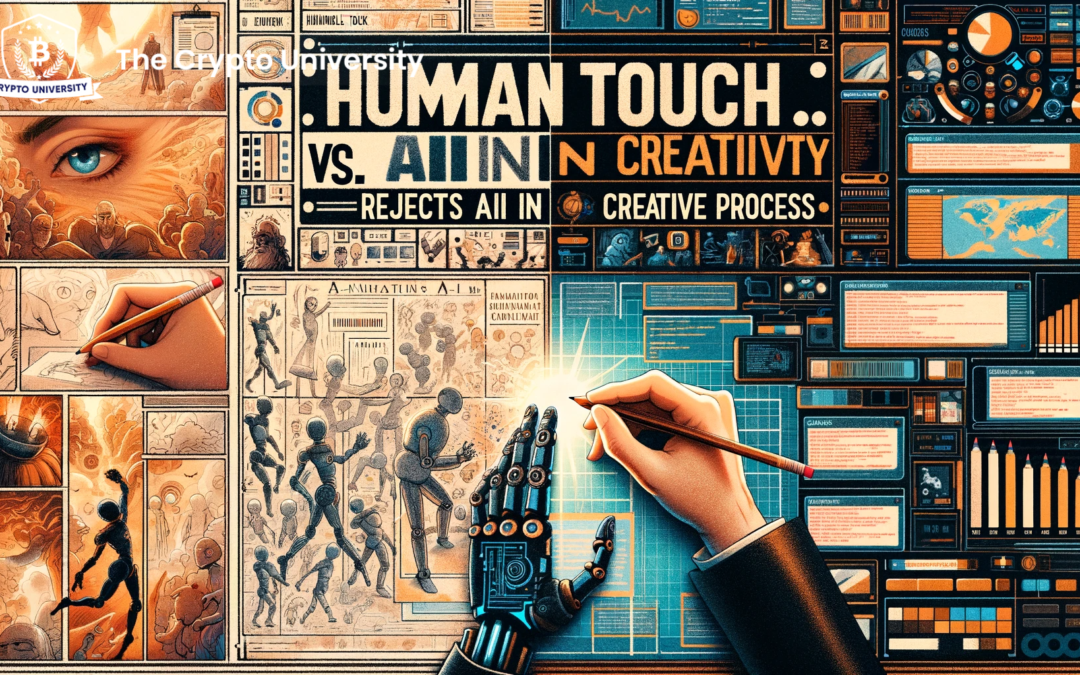Animation exec advocate for the human touch and reject AI in creative processes. In recent times, the integration of artificial intelligence (AI) into various industries has sparked debates about its role in creative processes. In this context, a prominent animation executive advocates preserving the human touch in the creative realm, vehemently rejecting full AI reliance in the animation process. Animation stands as a vibrant form of creative expression, captivating audiences worldwide.
The Human Touch in Creativity
At the core of creativity lies the essence of human touch, emotions, intuition, and the ability to infuse a unique perspective into artistic endeavors. While AI demonstrates remarkable capabilities, it struggles to replicate the depth of human experiences and the nuanced touch that defines creative works.
AI’s Role in Animation
AI has made significant strides in the animation sector, from automating certain processes to generating entire scenes. However, the question arises whether AI can truly capture the intricacies of human imagination and translate them into visually compelling animations.
The Advocacy of Human Involvement
The animation executive firmly stands against the notion of AI replacing human creativity. Arguments revolve around the belief that the essence of storytelling, emotions, and the intricate details that make animations memorable can only be achieved through the human touch.
Collaborative Potential of Human and AI
Rather than a complete rejection, the executive advocates for a balanced approach where AI complements human creativity. Examples abound in the industry where collaborative efforts have led to groundbreaking animations, combining the efficiency of AI with the depth of human imagination.
Creative Innovation and Challenges
Rejecting complete AI reliance fosters creative innovation. However, challenges such as resource constraints and time limitations surface. Balancing innovation with practical constraints becomes a delicate task.
Impact on Industry Standards
Advocacy for the human touch influences industry standards, prompting a reassessment of the prevalent belief that AI can entirely replace human creativity. This shift in perspective impacts how animation studios approach projects and set benchmarks.
Future Outlook
The rejection of AI dominance in animation paves the way for a future where human creativity takes center stage. The potential for groundbreaking achievements becomes more pronounced as the industry emphasizes the human touch.
Case Studies: Successful Human-Centric Animation
Examining successful case studies where the human touch led to remarkable animation projects showcases the tangible benefits of prioritizing human creativity. These instances serve as guiding lights for the industry.
Challenges of AI-Driven Animation
Delving into the challenges faced when heavily relying on AI in animation reveals limitations and drawbacks. From the uncanny valley effect to the struggle to capture genuine emotions, AI faces hurdles in achieving complete autonomy.
Voices in the Animation Community
Perspectives from notable figures in the animation community contribute to the ongoing discourse. Opinions vary, reflecting the delicate balance required to integrate AI without compromising the essence of human-driven creativity.
Overcoming Skepticism: The Power of Collaboration
Strategies to overcome skepticism about AI’s involvement involve promoting collaborative efforts. The animation industry can harness the combined strengths of human creativity and AI efficiency by encouraging dialogue and partnerships.
Maintaining Authenticity
Authenticity remains a hallmark of exceptional animations. The human touch contributes to the authenticity of animated productions, resonating more deeply with audiences
Conclusion
In conclusion, the animation executive’s advocacy for a human touch in animation resonates as a powerful testament to the enduring strength of human creativity. Balancing AI’s capabilities with the depth of human experiences ensures that the animation industry continues to produce timeless, authentic, and emotionally resonant works.
